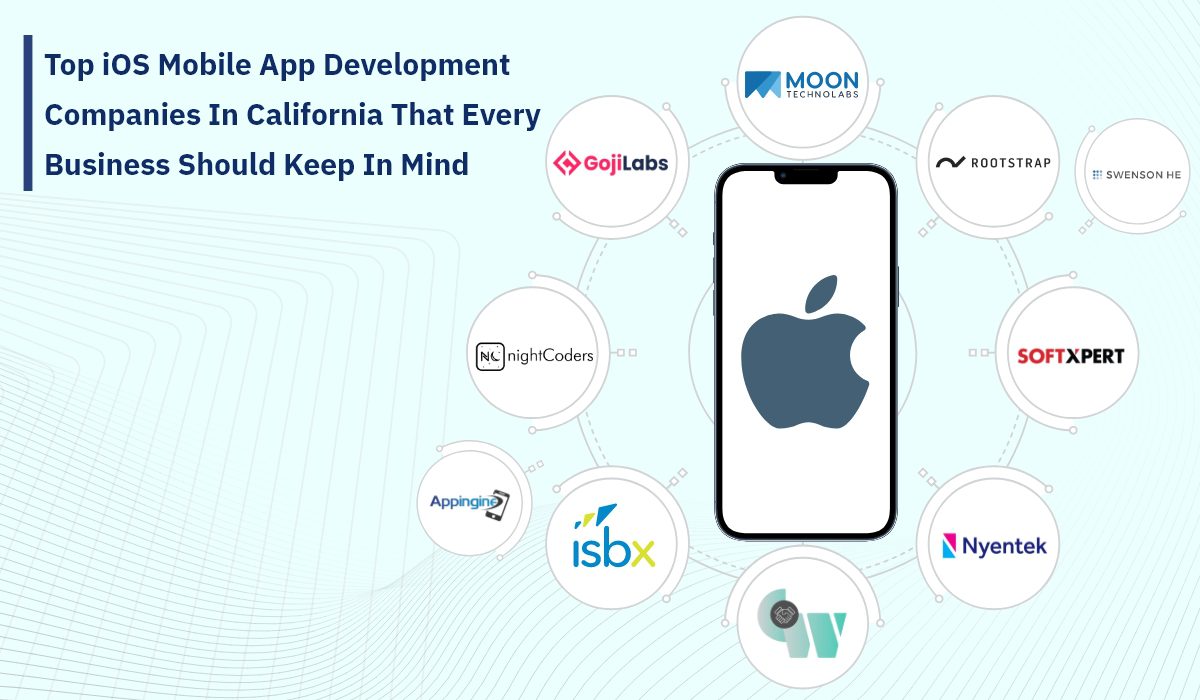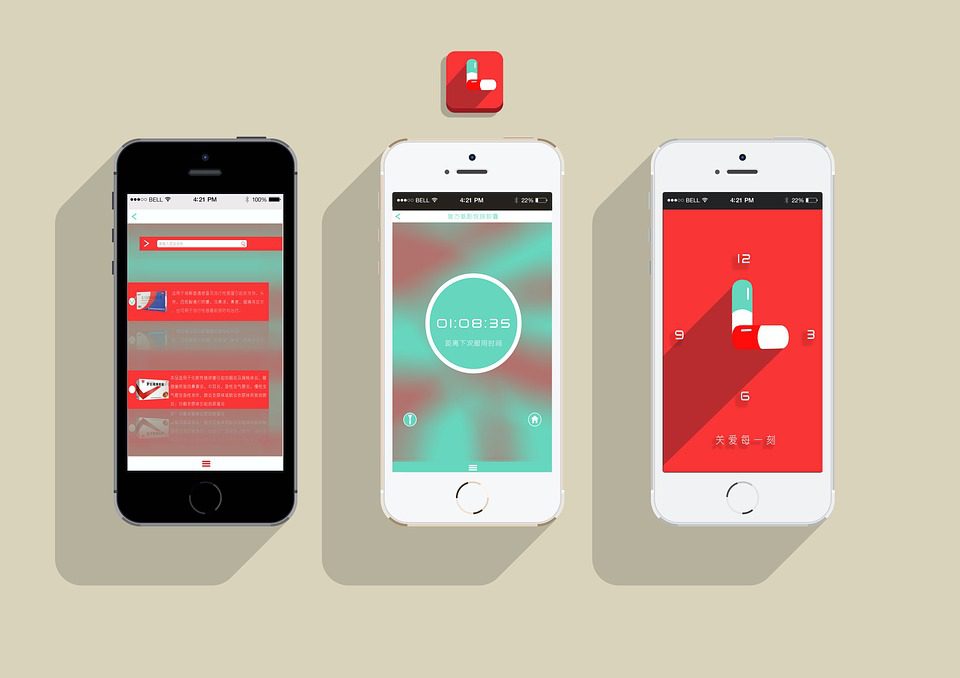- 1. Types of Mobile Apps
- 2. Best Programming Languages for Mobile App Development
- 3. Conclusion
There are innumerable things you need to consider as a business when you decide to build an application. Application programming desires you to take care of all types of learning programming languages, frameworks, and SDKs for mobile apps. You also need to consider some of the most mandatory needs that include the frontend (UI), backend (server-side), and development environments. The frontend developers are not always the same as the backend developers, but they usually collaborate well to build both types of applications – Mobile and web apps. Our sole aim is to help businesses sieve out the best results from programming languages for mobile app development.
This post will go over the top mobile app development frameworks.
Types of Mobile Apps
1. Native Apps
Native apps are like local destinations- easy to approach and simple to work with. Native apps are one that is designed exclusively for the device’s operating system and is accessed via the app launch icon. These programs are referred to as native since they were written in a platform’s native programming language. When you develop such apps you get to access native device capabilities. There are many coding languages, Java is one of the native coding languages for Android OS, while Objective-C or Swift is the native coding language for iOS.
Mobile web applications are not true mobile apps. The web app is different from mobile apps. These are web pages that look and behave like native apps. A web application is, by definition, a website that has been customized and optimized for any smartphone. And all you need to use it is a browser on your device, the address, and an Internet connection. The native web app will work best for all native platforms.
2. Hybrid Apps
Hybrid apps- as the name says are a combination of web apps with native apps. They can utilize different capabilities of the device they are installed on and can be loaded from within the app, much like native apps.
Hybrid apps are cross-platform and have access to smartphone capabilities because they combine online and native apps. These programs can only be found in stores like Google Play and the App Store. Hybrid apps can work best on all platforms. Their platform is HTML5 just like any web application. They are handled by all types of the browser, which is a component of the application itself.
3. Progressive Web Apps
Progressive Web Apps (PWAs) are those small applications that run in a device’s web browser. Although it is not natively distributed on the device, it has the appearance and feel of a mobile app.
PWAs are simple to make for developers with web development knowledge. The coding languages utilized in the app development process ought to be familiar to you. There is therefore less of a learning curve.
Having said that, the use of native device components by these apps will be somewhat constrained.
Best Programming Languages for Mobile App Development
Using iOS for app development
Apple created its own unique platform called iOS for both mobile (iPhone) and tablet devices. These can run the iOS operating system (iPad). Apps created for the iOS platform can be targeted to run on both iPhones and iPads. The real limitations that are accessible on each of the devices must be taken into consideration when building the app. You can download iOS apps from the Apple app store to your iPhone or iPad.
The iOS has Xcode IDE, and a Mac machine to make apps for iOS. While if you are working on a Windows PC by itself, you can’t efficiently build and debug apps using Xcode. The complete Apple development toolbox is included with Xcode, including SDKs, a code editor, compile/build tools, simulators, and a debugger. To deploy an SDK that you create or import 3rd party SDKs, or package managersCocoaPods. Both the native iOS SDK with Objective-C and Swift and the many cross-platform technologies created against that framework’s SDK but aimed for iOS can be used to create apps for iOS devices. iOS app development is secure and faster than any other compared application developing platforms. There are languages like Objective c and Swift used to build the application. let us see the apps in detail.
Objective – C
A general-purpose, object-oriented programming language with extra capabilities is objective C. It works like a small-style messaging app that can be used for all types of mobile app development. Objective C is an expanded version of the C language. Objective C is a modern, mature programming language that is primarily used to create apps and run the macOS and iOS operating systems.
It is safe to say that it is a trustworthy option for development. The two-file system in Objective-C requires programmers to do more work, which takes their attention away from the greater picture. But in Objective-C, you must manually synchronise method names and comments between files while ideally adhering to a consistent convention. However, this isn’t assured unless the team has established guidelines and conducts code reviews. Some of the most inevitable features of Objective C are
- To provides both static and dynamic type support.
- Thanks to Smalltalk, message syntax is identical to that of our native tongue.
- Objects using a simple introspect.
- It has a garbage collector that runs on autopilot
- There are Object-C Experts who can simply utilize this simple-to-learn technology
- It also has a nest coding style where many legacy codes are included.
Swift
Swift is a significant technology platform in the field of developing mobile apps. This open-source programming language was created for the iOS, OS X, and tvOS platforms. Swift works well for all this was a one-shot system programming language. A safe programming method can be simply adapted by the language’s flexibility and scalability to add contemporary features to any project. Apart from being one of the first scripting languages with industrial-quality infrastructure, Swift is also fast, enjoyable, and easy to use. There are renowned companies like Lyft, LinkedIn, and other apps that are examples of apps created using Swift.
Some of the unbelievable features Swift include
- There is a standalone IDE in Swift called Xcode
- Swift can help to detect small problems during compilation and is usually type-safe.
- There is consistent support while using Swift.
- It includes built-in memory management tools like automated reference counting (ARC).
- You can easily run Swift on platforms Cocoa and Cocoa Touch
- It eliminates some of Objective C’s issues and requires less maintenance.
- It’s simpler to scale up projects.
- The programming language that is robust, user-friendly, and simple to learn
- Swift’s syntax is expressive yet succinct, and writing it is engaging and enjoyable.
- Swift has a large base that provides a wide range of capabilities for smooth and secure design while producing software at an incredible rate.
Here we have seen the two languages for iOS mobile app development and now we will be seeing for Android app development.
Using Android for app development
Python
The programming language Python is high-level, all-inclusive, and very liked by customers. Python is one of the most popular technology with a recent version of Python3 as a leading programming language. This latest version of Python 3 is utilized for cutting-edge software development projects with newer technology machine learning and web development. If you compare this with other programming languages like C++ and Java, Python leads the game by a high margin with its efficiency and compatibility. Python is a great choice for beginners as well as seasoned professionals.
There are several features of python like
- The most popular high-level, multipurpose programming language right now is Python.
- Easy to Code. Python is a very high-level programming language, yet it is effortless to learn.
- Easy to Read.- You can write Python code in simple English words
- The codes are free and Open-Source
- Robust Standard Library
- It is easy to be called an Interpreted language for mobile app development.
- Apps are easily Portable in python
- It is Object-Oriented and Procedure-Oriented- This means Python backs up both the procedural and object-oriented paradigms for their apps.
- In general, the program codes written in Python are not lengthy but smaller than those written in other languages . As a result of the language’s indentation requirement, programmers have to type relatively little, and their work is always readable.
Google, Amazon, Facebook, Instagram, Dropbox, Uber, and many other tech giants employ the Python programming language.
Java
Given that Java is one of the most widely used programming language on the planet, it should come as no surprise that it’s a top option for creating mobile applications.
The majority of developer-completed open source projects use this strong and reliable server-side language. Java is a commonly used and well-established language among developers, thus while it is possible to create iOS apps using this language, Android app development is where it is most frequently utilized. The Android platform already has a variety of development tools for it, and it is adaptable. Some of the most popular features include
- File mismatch()
- Method Switch Expressions Compact
- Number Formatting
- Stream API’s Teeing Collectors
- the new indent(), transform(), describe Constable(), and resolveConstantDesc methods for Java strings ().
- JVM Constants like API, JEP 334
- Pattern Matching for Examples in JEP 305
- Raw String Literals are no longer supported by JDK 12.
C++
Popularly called C plus plus, it is a general-purpose object-oriented programming language with low-level memory manipulation capabilities. C++ is an extension of the language that draws its syntax from C. If you have experience with C, learning C++ shouldn’t present a significant challenge because the two languages are almost identical, with the exception of C++’s greater breadth of capabilities. Powerful and widely used in a variety of industries, including the banking sector, the manufacturing industry, and many more, C++ is a resource that can be used for a wide range of tasks.
C++ has been around for a while and has found usage in a variety of fields, including the creation of mobile apps, for this reason. Creating apps for Android, Windows, and iOS is a good use of this language. Beyond mobile apps, C++ has enormous potential and can be used to build some of the most powerful tools, including Photoshop and Google Chrome. among others, PayPal, and Amazon.
Operating systems, new programming languages, visuals and designs, game and app development, web browser development, compiler development, applications in the fields of engineering, mathematics, and medicine, enterprise tools, and compute platforms can all be created using C++. A few of the innovative features include
- It is an object-oriented, high-level, and portable programming language.
- Easy to comprehend and simple.
- Includes built-in libraries that offer programmers a variety of functions.
- This language with a compiler that accelerates program execution
Kotlin
Kotlin is a platform-independent language that supports all platforms, its native code can execute on a variety of them.
Kotlin is a statistically typed programming language called Kotlin that is used to create contemporary Android apps. In order to create sturdy and high-performing programs, Kotlin has the ability to influence other programming languages like JAVA. In comparison to Java, the new language is more streamlined and has more sophisticated capabilities, making it the superior choice. Kotlin actually stands out from other programming languages in that it works with practically any IDE, including Android Studio and SDK toolkit.
The Java virtual machine (JVM) and JavaScript source code can both be used to generate Kotlin, a statistically typed programming language. It has a rather clear, observant syntax that gradually gets more complex. Kotlin has multiple features like
- A language used in open-source software.
- It can be fastened up Android app startup.
- Has a simple and condensed syntax.
- Allows for operator overloading.
Native App Development Languages
Initially, we gave a brief intro on what native programming languages are and how it is beneficial for all types of mobile app development. The native app is capable of using both the device’s software and hardware at once. This application was created using cutting-edge technology that has been streamlined and is compatible with new technologies like mobile cloud app creation, and web app comparison. Native programming languages are used to create native mobile applications. both benefits and drawbacks. These are the advantages and disadvantages regardless of Native app development languages with options of using different languages like Java or Kotlin for Android or Objective-C or Swift for Apple.
- Minimalistic and brief code
- Concurrency is supported internally.
- Pointer safety
- Determine Type
- Less mental strain
- Combining the most advantageous aspects of each programming paradigm
- Low-level coding for modern technologies that are included into the apparatus
- Fastest in execution when using your language to obtain the newest and finest features
Hybrid App Development Programming Languages
C# and Xamarin
The creator of C# is Microsoft which has developed C# as an object-oriented programming language. Programming in C# against the.NET framework is possible only with the use of the Xamarin framework which is also developed by Microsoft. The open source mono implementation of the .NET framework is used to develop iOS apps.
Considering it is the best programming language created by Microsoft’s Visual Studio. The code is a well-liked IDE for authoring C# and Xamarin code. The cross-compiled C# code executes natively on an iOS or Android device. Due to this, no-lag execution that is extremely similar to native development is possible. There are particular extensions known as Xamarin. and Xamarin for iOS. Access native Android and iOS features from Android that can be called from C#. To create the installable version of iOS, you need XCode on a Mac computer.
Dart and Flutter
A client-optimized, open-source programming language called DART places a strong emphasis on the user interface, productivity, and speed. It has asynchronous coding and is used with Flutter to create cross-platform apps quickly. Dart is well-liked for developing Native mobile apps in addition to client-side and server-side software. Google created Dart to hasten the development of apps across all platforms.
Even a company the size of Google could not avoid the issue of developing Android and iOS applications for different platforms. Although it is just in beta, Flutter differs from Xamarin and React Native in its approach.
React Native and JavaScript
React Native is a genuine JavaScript framework that provides genuine, locally adapted mobile applications for iOS and Android. It is built on the response, Facebook’s JavaScript library, to create the user boundary, however, it focuses on the mobile platform rather than the browser. It makes use of a UI technique similar to that of native iOS or Android apps. Applications for providing feedback are equally free to download as native apps.
It is regarded as the best framework for creating native apps for both mobile operating systems. Instead of developing individual apps for each system, a cross-platform program that works on various systems is produced using the JavaScript language.
Progressive Web App Development Languages
A PWA (progressive web app) is a small, portable application that runs in a device’s web browser. It has the appearance and feel of a mobile app, but it is not natively delivered on the device.
PWAs are easily made by programmers with web development knowledge. The coding languages that were employed during the development process should already be familiar to you. Consequently, the learning curve is not as significant. Having said that, the capacity of these apps to access native device components will be somewhat constrained.
Ruby
Ruby is a dynamic, interpreted, object-oriented, and reflective general-purpose programming language that was influenced by languages like Perl, Effiel, Ada, and Smalltalk. It supports a number of imperative, functional, and object-oriented programming paradigms.
Ruby offers a standard structure for web and mobile apps and features a dynamic type system with automatic memory management. However, Ruby’s drawbacks include its slow runtime speed and the challenge of finding adequate documentation. Some of the features that make ruby as a preferable language for mobile app development are
- Ruby is an interpreted Language
Mobile app developers know that ruby is an interpreted language, and Ruby allows you to write code that is read by a computer program and translated into output. The fact that interpreted languages have a large following is one of its undeniable advantages. The Ruby executable is so compatible with almost all computers on the market. Ruby can be set up quickly if it isn’t already. As a result, almost everyone can now use the Ruby program. Additionally, even when operating on various versions on the same workstation, the programs can be readily self-contained.
- Ruby works on OopS concept Programming in an Object-Oriented (OOP) Environment
In contrast to procedural programming, Ruby already has built-in support for object-oriented programming. Contrary to procedural programming, which begins at the top and descends through a set of instructions, object-oriented programming offers chances to have
- Different ways to Implementation
If you know C, you can expand the standard Ruby you are familiar with. But there are other Ruby implementations as well, such as Java-based JRuby. Therefore, you can expand your Ruby work using JRuby if you are familiar with Java. Ruby is a desirable alternative due to its flexibility.
- Dynamic Typing
This does not imply that Ruby will type everything for you, though. In other words, if you specify a data type for a certain variable, you can later change that data type. Additionally, a conversion is required if the variable assignment needs to change at a later stage of the program. Ruby’s support for dynamic type enables you to seamlessly change the variable of data.
Javascript
To provide a basis for creating client-server-based websites, JavaScript was initially created. Being an object-oriented language, it is simpler to understand and use this language when creating codes. In this case, a developer must create scripts in order to create the features that will be used by web browsers. On the JS platform, it is simple to determine the OS and browser of the developer. As a result, it provides the codes with greater security than any other programming language.
HTML5
Are you going to create location-based or web-fronted mobile apps? Then HTML 5—the fifth iteration of HyperText Markup Language—is the best choice for you. It is a markup language, not a programming language, that employs tags to organize and display the content on a webpage. The most recent HTML 5 updates highlight outstanding capabilities including media elements, cross-platform compatibility for various programs, and rapid market adoption. Google Docs and Drive are two examples of HTML 5
- Increases the effectiveness of using Adobe Flash when building websites by supporting vector graphics.
- Includes predefined tags to show information in the header and footer, images, captions, and other related elements.
- Scripts and links no longer use the “type” attribute.
- Multiple tags and media components are supported
- All browsers are compatible, and new capabilities and standards have already emerged.
- support for rich media types like audio and video built-in
- Uses caching or local storage to load more quickly
Conclusion
The shift has been radical when it comes to developing mobile apps and there are a lot of factors that need to be considered apart from just the platform and programming languages. Most businesses have started to see a shift after Google and Apple developed their own languages for mobile app development. These ways are definitely a way to add new functionality to their platforms and make innovation in apps in every way possible. Now many companies are giving this opportunity and it is possible that the mobile platforms won’t undergo any significant changes. But there has been a lot of change in the cross-platform market.
For every year, the expectations rise and a new preferred framework is expected. This puts a lot of pressure and gets crucial to select the app development language and methodology to create a new one. This completely depends on the team’s expertise and the needs of the app. The actual truth lies in the fact that mobile development is a consistently-evolving technological field with AI and machine learning coming to mobile devices, developers must stay up with changes in the tools and platforms if they want to be successful.







